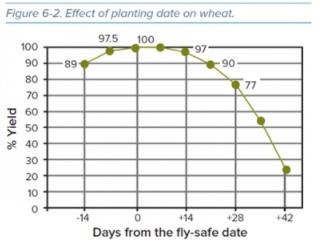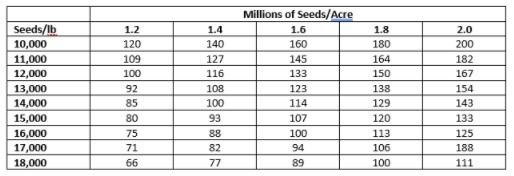By Laura Lindsey
In general, the best time to plant wheat is the 10-day period starting the day after the fly-free safe date. When wheat is planted more than 10-days after the fly-free safe date,

there is anwheat planting date increased chance of reduced fall growth and reduced winterhardiness. The effect of planting date on wheat yield is shown in Figure 6-2 of the Ohio Agronomy Guide. A free pdf of the guide is available by clicking here: https://stepupsoy.osu.edu/wheat-production/ohio-agronomy-guide-15th-edition (Download the pdf by clicking on the picture of the guide.) Currently, with funding from Ohio Corn and Wheat, we are re-examining the effect of wheat planting date…so stayed tuned next year for those results.
When wheat is planted 3-4 weeks after the fly-free-safe date, the same yield can be achieved as earlier planted wheat if freezing weather does not occur until late November or early December. However, a higher seeding rate is recommended. For wheat planted 3-4 weeks after the fly-free-safe date, use a seeding rate of 1.6 to 2.0 million seeds per acre. The actual number of seeds per pound and germination rate are important for determining the correct seeding rate and drill calibration (Table 1). There are fewer seeds per pound of large seeds than pounds of small seeds. The number of seeds per pound can be found on the seed bag.
Table 1. Pounds of seed needed to plant from 1.2 to 2.0 million seeds/acre with seed of varying size.

Additionally, late planting also means plants will be smaller than normal when entering dormancy and have smaller, more shallow root systems, making them more susceptible to heaving next March. The best heaving control is to get the seed placed between 1.0 and 1.5 inches deep when planting and to plant no-till. These two practices combined will reduce heaving potential.
Source : osu.edu